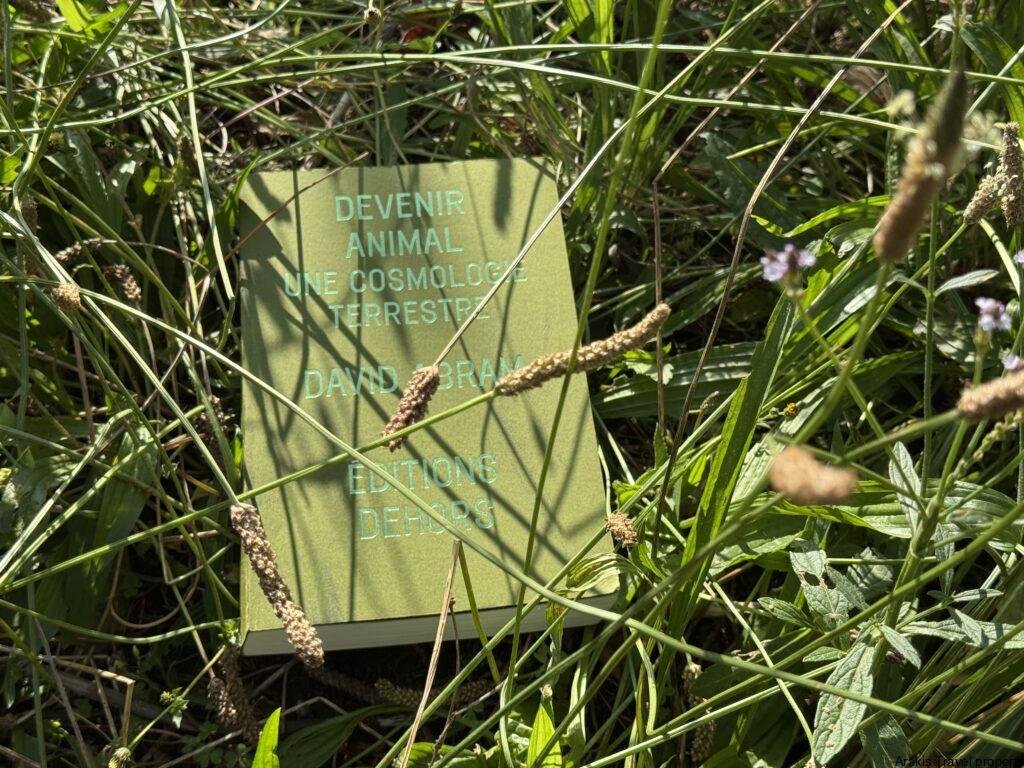
“Reconnecting with nature” has become a leitmotif when it comes to raising awareness of environmental challenges.
It’s a subject that’s been on my mind a lot, since it’s at the heart of Arakis Travel’s objectives! For several reasons: because I live in one of the countries with the greatest biodiversity in the world, and where indigenous communities still live today, in obvious contact with nature and its human and non-human beings, visible and non-visible. And because it’s part of my mission to contribute in my humble way to this quest for spiritual renewal.
But what does it mean to reconnect with nature? What connection have we lost? Who is involved? And of course, how do we go about reconnecting with nature? Well, I’m not going to answer them all in this short article, so bear with me.
Things just happen… or as some would say, synchronicities are at work.
I was strolling through a local Parisian bookshop in September, when my gaze came to caress a book whose gilded letters glinted on a green grass cover, inviting me “becoming animal”. The author, David Abram, was totally unknown to me, but the back cover clearly aroused my curiosity, as did the first few pages covered in strange paintings.
It took me several weeks to get through this atypical book. It’s neither fiction, nor an essay, nor really literature, although all the qualities are there. I had no words to describe it, and so much the better. This reading acted on me like a psychotropic beverage, taking me far into the ether to the rhythm of lyrical and repetitive flights of fancy, like a haunting mandala. I’ve never heard of anything quite like it! Each chapter is a journey in itself, and I remained both in awe of Sir Abram’s incredible descriptive skills and grateful for his guidance along this initiatory path, during which my intellect was invited to fall silent, allowing myself to be carried along by incredible poetry.
So what did I learn?
That patience is required for this process of reconnection to take place, just as the Nepalese shaman Sonam demanded of the author;
That the many prejudices accumulated over centuries of reductive rationalism must be overcome, and that this is no easy task;
That learning to communicate with more-than-human beings involves the body, rather than the mind;
That many tools (including our abstract language for naming things) cut us off from this contact with the wild and isolate us in a bubble, as if in a metaverse where we’ve renounced the constraints of a certain reality to shut ourselves away in a world of fantasies and virtual facilities. And that this split conceals an immense danger at a time when Nature is reminding us how arrogant yet fragile we are;
That there is immense hope and immeasurable joy in rediscovering this animal bond, as we discover more and more how close we are to all the beings with which we make up the living world, despite our human specificity;
That all this has to do with spirituality in the broadest sense;
That I could learn to read with my body rather than my intellect!
I recommend this book and thank its author, who has provided me with bits and pieces of the solutions I need to develop the methodology that informs our travels. My dream is to meet him in person one day.
“There are ideas that only come to us by the sea, and others that we only glimpse from the craggy heights. Some thorny notions are endemic to deserts, while other thoughts, too slippery to grasp, are encountered mainly in swamps.” David Abram, Becoming Animal: An Earthly Cosmology.
